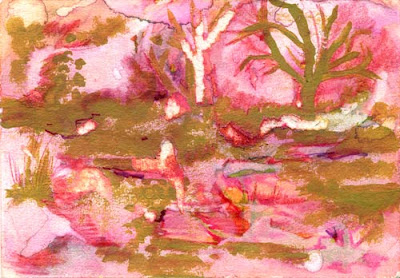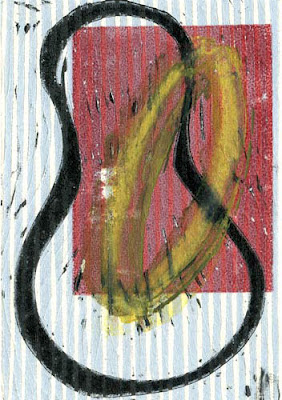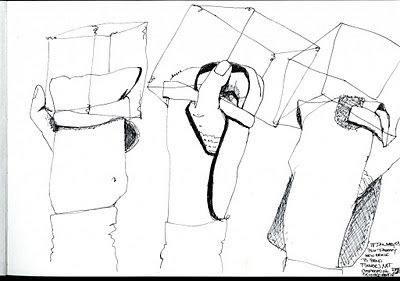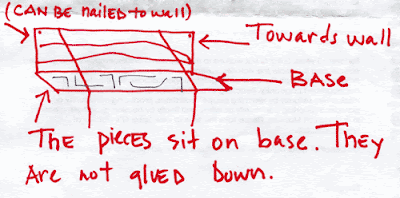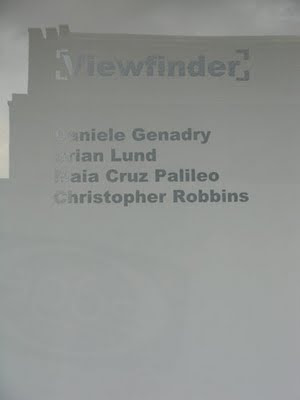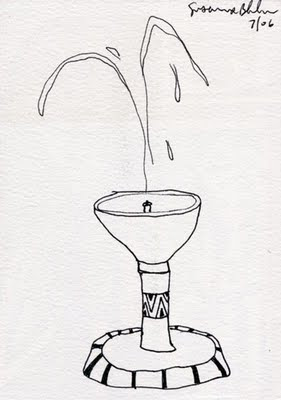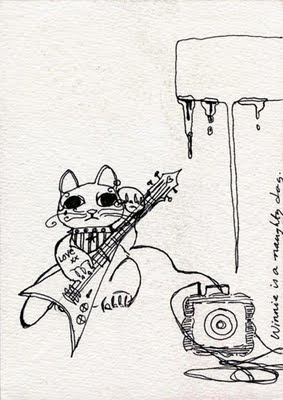To the right of the computer is an Alvin Cutting Mat (for me this doubles as a mouse pad). Here I noticed the coordinates and measurements and realize my place. I am home.
 |
| Detail: Alvin Cutting Mat |
Two "Viewfinders" that for me point to home are a house image by Pamela Delaura and a painting describing a map by Kariann Fuqua. Especially in the latter case, these images may not be directly connect to a sense of home. However, for me they have stirred a narrative. Images become transformed by what the viewer (in this case myself) brings to the picture. Without the viewer's interpretation an image lacks meaning. In a similar way, home is a place but it is also a collection of ideas and is built on personal connections.
 |
| Pamela Delaura, Sacked, Collograph & screen-print, 6in. x 4 1/4in., 2006 |
The interior of Pamela Delaura's print (seen above) seems to refer to a microscopic or biological perspective. In this regard, I see the body as our most earthly home.
 |
| Kariann Fuqua, Viewfinder, painting, 6in. x 4 1/4in., 2006 |
Kariann's "Viewfinder" (seen above) refers to a map where the curving dotted lines seem to indicate travel or hopping from island to island. I wonder if one can land and feel at home or is this a temporary sensation? Gazing back at the coordinates on my cutting mat, I consider how I decide an exact position. I suspect that thinking we are in the right spot (even if this is our illusion) is more comforting then aimlessness.



